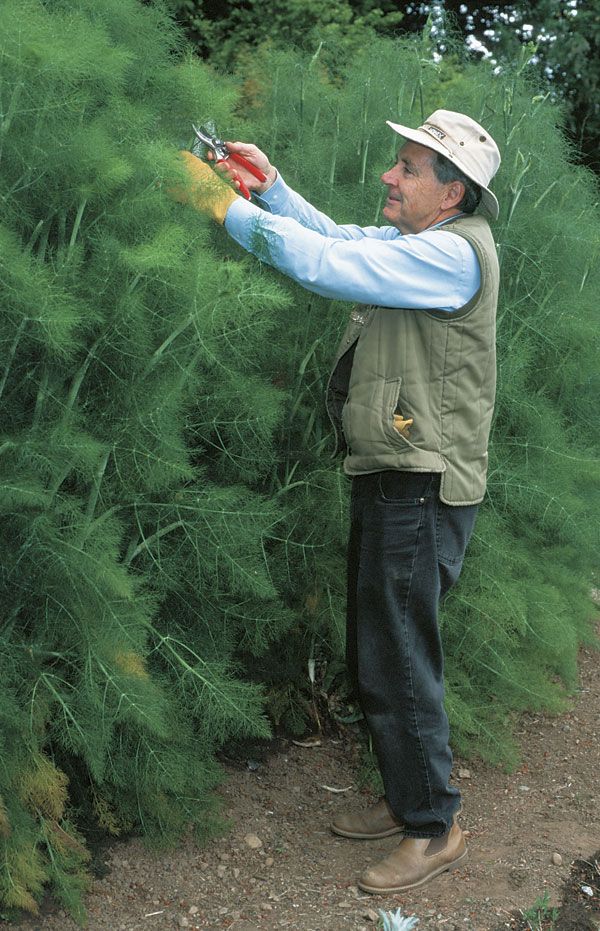
by Andrew Yeoman
October 1999
from issue #23
In one corner of our garden, my wife and I planted herb fennel. It grew and grew. It grew into a fennel forest that ives us a cool retreat in summer. We enjoy walking through its narrow corridors. The ferny leaves brush against our skin and the warm, sweet licorice scent wafts through the air, calming and soothing us.
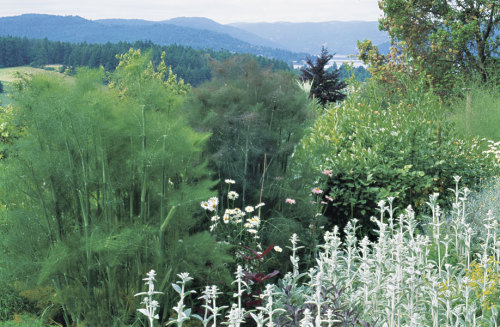 |
|
| Green and bronze herb fennel serve as a perfect screening device to divide a garden or hide a compost heap. | |
| |
We grow both green and bronze fennel here on Vancouver Island. Beyond color, little differentiates the two types of the herb, but we make the most of the colors in our garden designs. Both types grow vigorously and can quickly turn into a garden screening device. As garden plants go, herb fennel fronds are effortless to harvest and then snip into egg salad or tuna salad to add garden freshness. The seeds make good culinary accents. And for the budding ikebana enthusiast, the fronds offer an elegant backdrop for an arrangement of peonies.
Herb and bulb fennel are different
What is herb fennel, also known as sweet fennel? Is it the same as bulb fennel? The common herb fennels, Foeniculum vulgare ‘Dulce’ (green fennel) and its color variant ‘Rubrum’ (bronze fennel), are hardy perennials in my garden. They have a sweet licorice flavor in the leaves, stalks, and seeds.
The vegetable fennel, called Foeniculum vulgare var. azoricum, is grown for its fist-size bulbous base. Sometimes called finocchio or Florence fennel, this biennial vegetable is normally grown as an annual, though its habit in mild winter areas is to flower, set seed, and die in the second year. The leaves of bulb fennel have a flavor similar to herb fennel’s, but cutting the leaves decreases the potential size of the bulb.
Fennel can grow in partial shade
Hardy in mild climates, drought tolerant, and little bothered by insects, herb fennel is a kitchen gardener’s and cook’s friend. It is reliably hardy in the Pacific Northwest, provided the soil drains quickly in the winter. It is said to be hardy to Zone 6, and in colder zones, it can be grown as an annual. Fennel grows best in full sun, but the plant can cope with up to three-quarters shade.
The soil should be rich, moist, and well drained for ideal growth, but herb fennel, like many herbs, has a way of keeping itself going almost regardless of conditions. It has a long taproot that searches out water in dry conditions (bottom photo). Our soil’s pH ranges between 6.5 and 7.5, and we regularly get herb fennel plants 8 feet tall.
Planting fennel is no problem. The seeds can be sown directly into garden soil about the time of the last frost. My seeds have sprouted and grown well without any covering of soil. Sowings can be made a month earlier in containers. The seeds should be covered with a thin layer of potting soil and placed in a cool greenhouse or cold frame.
Be wary of where you put your fennel, because it crosses easily with dill, and the results are poor. It’s best to keep them far apart or to prevent them from showing flowers at the same time. Herb fennel seedlings can be transplanted without problems until their tops are about 6 inches high. Larger plants have long taproots, and although they can be transplanted in late winter or early spring, they take longer to reestablish themselves.
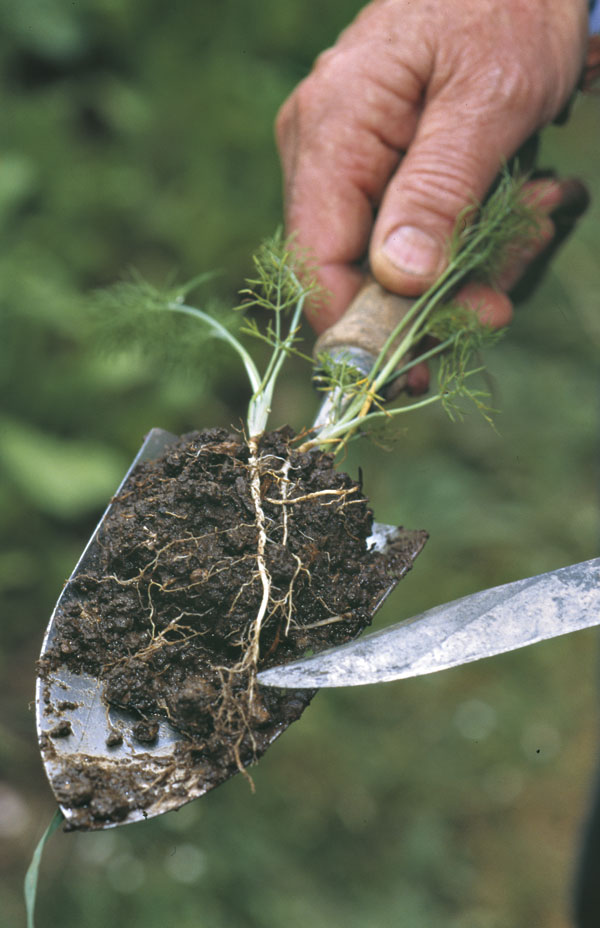 |
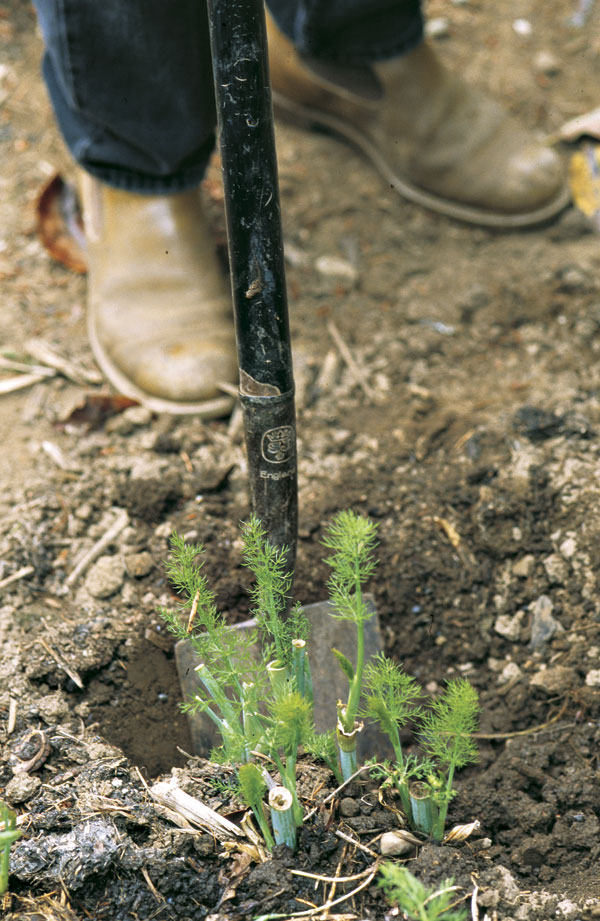 |
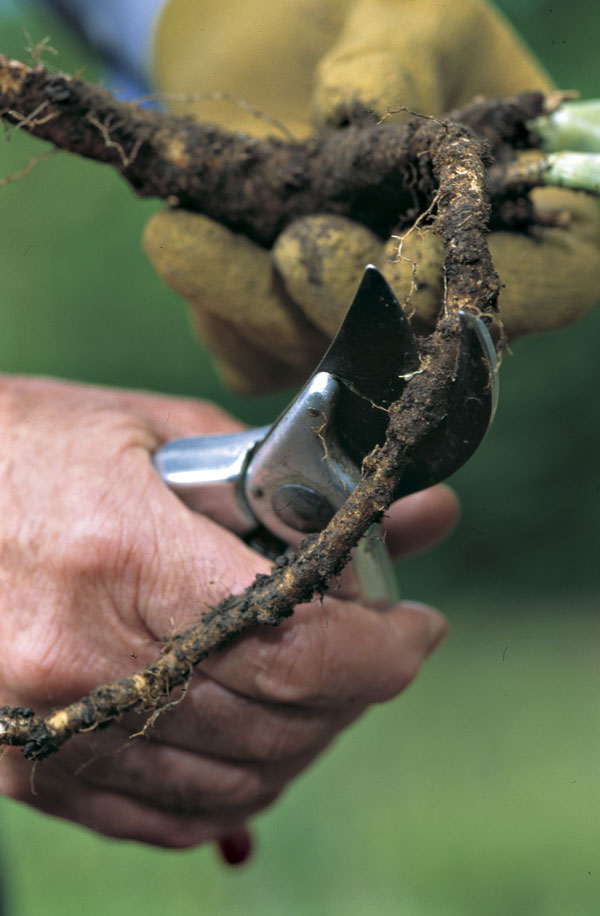 |
||
| Herb fennel, like dill, anchors itself with a sturdy taproot that probes deeply for water. | Fennel plants can be divided and moved as soon as top growth appears in the new season tem. | Side roots off the main taproot of the fennel plant can be cut off and potted to start a new plant. | ||
Plants that have been growing for several years and have developed woody stems can be divided when top growth starts in late winter. Make sure you dig out the deep roots (photo at right), unless you want the fennel to grow back in the same place. Separate individual growth shoots (top photo, facing page). The shoots with many root hairs can be immediately replanted. If more root hair development is needed, the shoots can be potted up and kept in the shade for two weeks until they develop further. Water relocated plants frequently until they are established. Then water only in droughts or after cutting back to grow new shoots.
Cultivation is partly determined by the needs of the chef. If seeds are required, then plants should be left uncut until the seeds are ripe. When the seed heads are brown and dry, harvest them by cutting them into a paper bag. Store them in a dry place. The seeds are easily separated from the heads by rubbing them lightly between your thumb and fingers.
If shoots are your fancy, it is best to have three or four plants and to cut one down every three weeks for new shoots to develop. When we cut down a plant, we water deeply and enrich the soil with a fish fertilizer.
Use herb fennel for garden design
The cycle of growth starts in late winter with the first young shoots rising beside the previous year’s dead or cut-back stems. For the kitchen gardener, the fennel shoots match snowdrops as a harbinger of spring.
In early spring, the shoots turn into a feathery mound of green or bronze foliage. They stand in sharp contrast to the defined edges of larger-leafed plants and the darkness of wet soil. Within the feathery mound, the stems are strengthening and preparing for the upward thrust that comes with increased heat and light.
As the fennel grows, the plant’s profile changes to a vertical and dominating accent in the landscape. It is tall enough in May to act as a backdrop to the emergence of companionable flowers like Shasta and painted daisies. In our garden, pink painted daisies show up spectacularly well against a background of bronze fennel. Later in the summer, the purple cone flower provides a similar richness to the garden. Other plants that contrast sympathetically are the various color forms of garden sage, such as purple and golden sage.
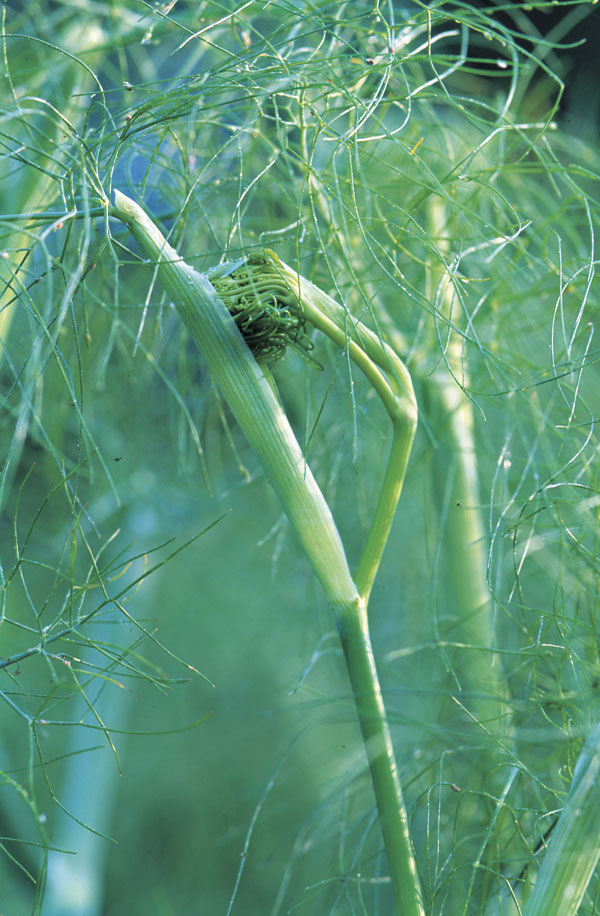 |
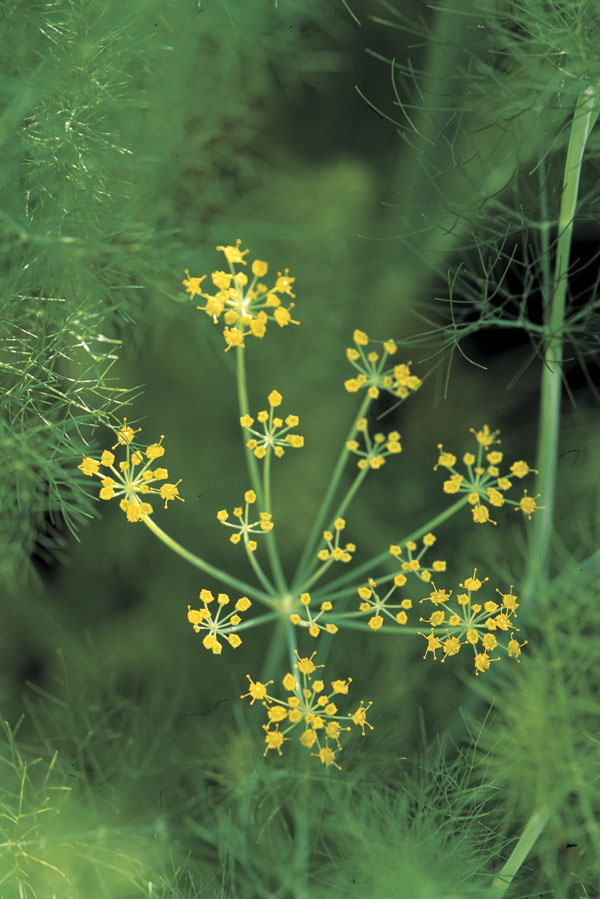 |
|
| New fennel foliage emerges from the stem. | Herb fennel produces delicate yellow umbels, which yield edible seeds that make an excellent garnish. | |
With rich soil and adequate moisture, fennel will start to form its characteristic flower heads as it reaches 4 or 5 feet in height. When fully developed, these umbels will stand out as bronze or pale yellow-green umbrellas above the soft foliage of the plant. The umbels become yellow as the flowers open and are seen at their best against a dark background. At full size in late summer, herb fennel can reach 8 feet tall, and its value in the landscape changes to one of screening, dividing or hiding parts of the garden.
Fennel can be used in the back of the perennial or mixed border, as a high hedge, or flanking both sides of a path to form a temporary allée that draws attention to a tree or sculptural feature at the end of the path. You could even create an edible maze, the drawback being that established plants can reach 4 or 5 feet wide after five years.
Bronze fennel can be spectacular in a large urn or half barrel. A half whiskey barrel, 24 inches across and 15 inches deep, could take five young plants and form a garden centerpiece or mark a change in direction of a path, or it could even make part of your patio more private.
You can also use fennel in the garden to attract beautiful and beneficial insects. In the Pacific Northwest, fennel is a primary host for the anise swallowtail butterfly and its large green, yellow, and black caterpillars. Although the caterpillars are sometimes seen snacking on fennel in the summer, the damage done is insignificant relative to the delight given by the butterflies’ beauty.
Two species of beneficial flies are attracted to the flowers of fennel, as well as to some other members of the Umbelliferae. The syrphid fly and the tachinid fly supplement their diets with fennel nectar. The syrphid fly, also called the hover-fly, lays its eggs where aphids have become established; the eggs hatch into larvae, which in turn eat the aphids. The tachinid fly lays eggs in host caterpillars, including the cutworm and the tent caterpillar.
Fennel has a long history
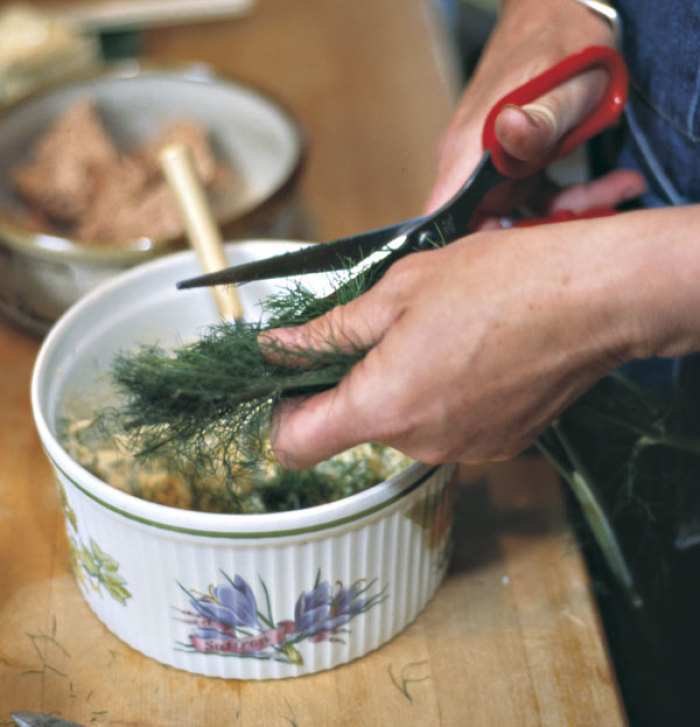 |
|
| A quick and tasty way to use herb fennel is to harvest it in the garden, hurry inside, and cut it into an egg salad or smoked salmon dish. | |
| |
The fennel you can see growing wild in vacant lots in San Francisco and up and down the Pacific coast is a pre-cruise-ship world traveler. It probably first came to human notice tens of thousands of years ago when it was used to flavor the barbecue of the cave dwellers of southern France and northern Italy. The ancient Romans called it fenicularius and used both fresh shoots and ground seeds.
Like garlic, fennel seems to have been spread around Europe and the Middle East by the Roman legions. In the Middle Ages, fennel was widely used in Europe, both for its medicinal properties and its ability to enliven taste buds tired of a diet of aged stew. Fennel traveled to India and China and later to Australia and North and South America. But it’s best to keep it close to home in your own garden.
| Sources for herb fennel | |
| These companies offer seeds for green and bronze fennel, with bronze called either ‘Rubrum’, ‘Purpureum’, or ‘Nigra’.
Goodwin Creek Gardens |
Richters Herb Catalog 357 Hwy. 47 Goodwood, Ontario L0C 1A0 905-640-6677 www.richters.com The Thyme Garden |

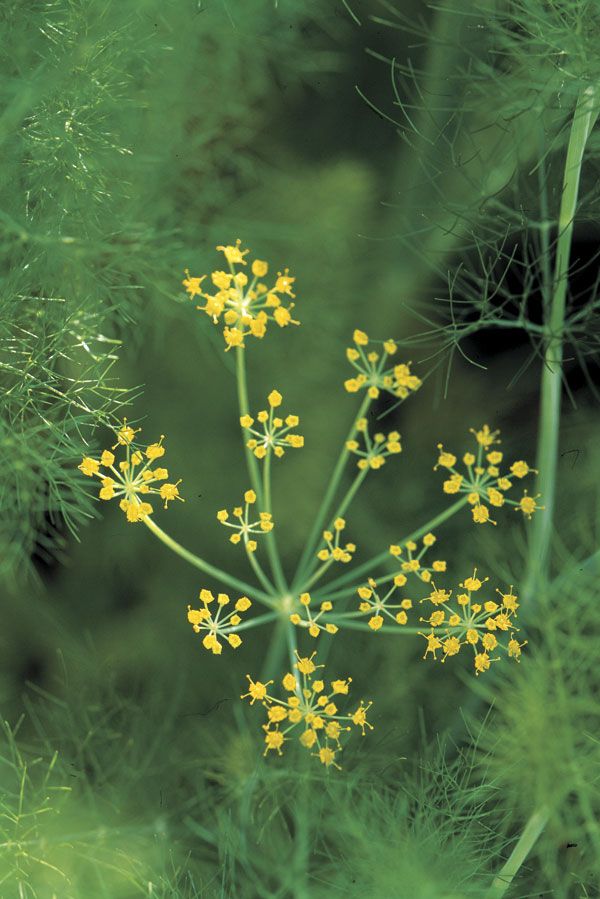
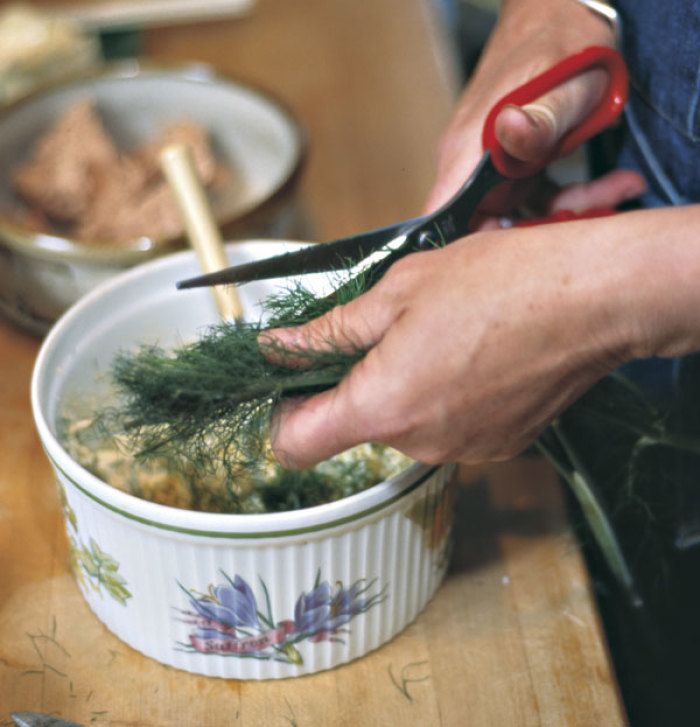
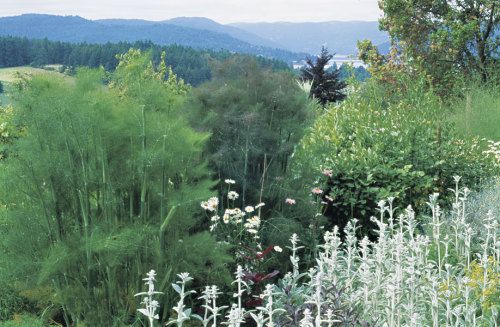
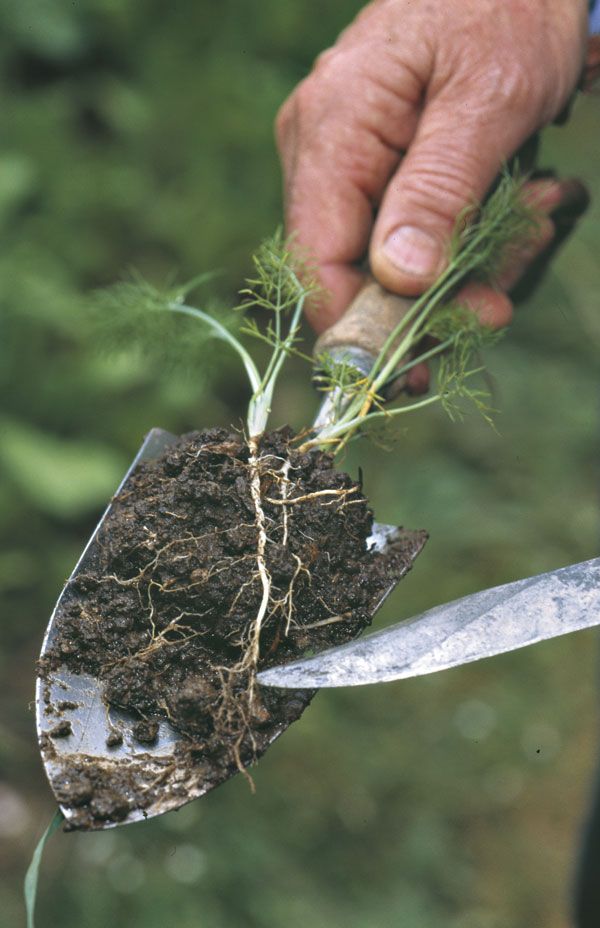
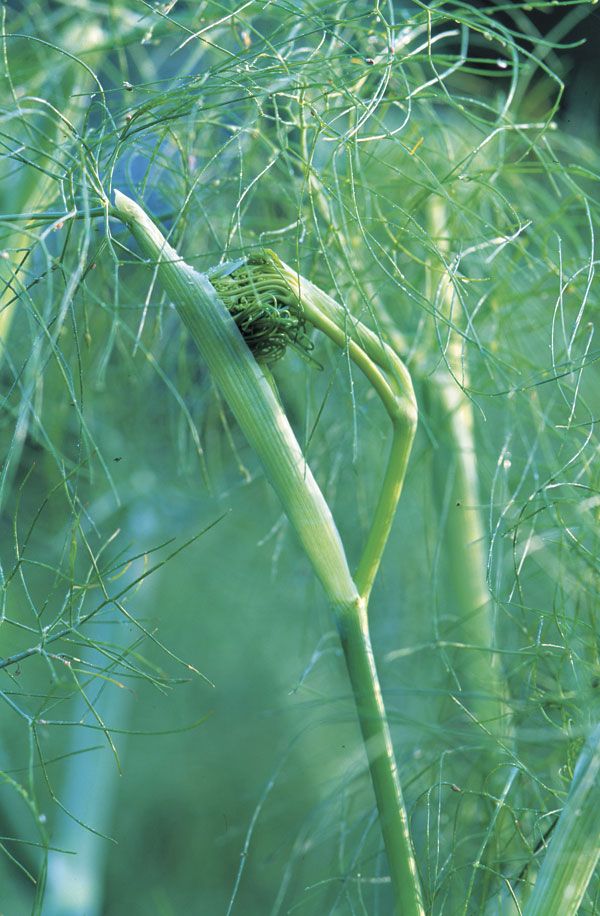
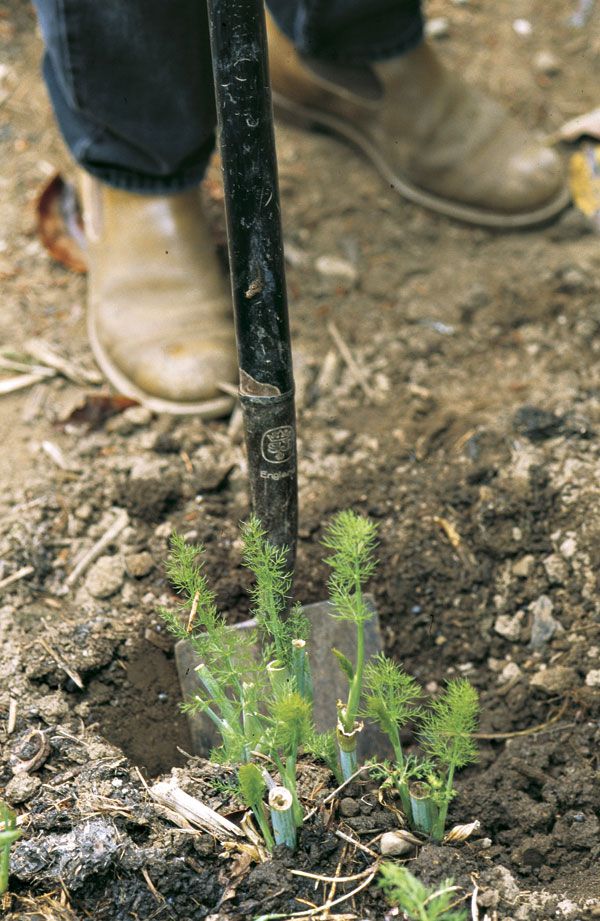
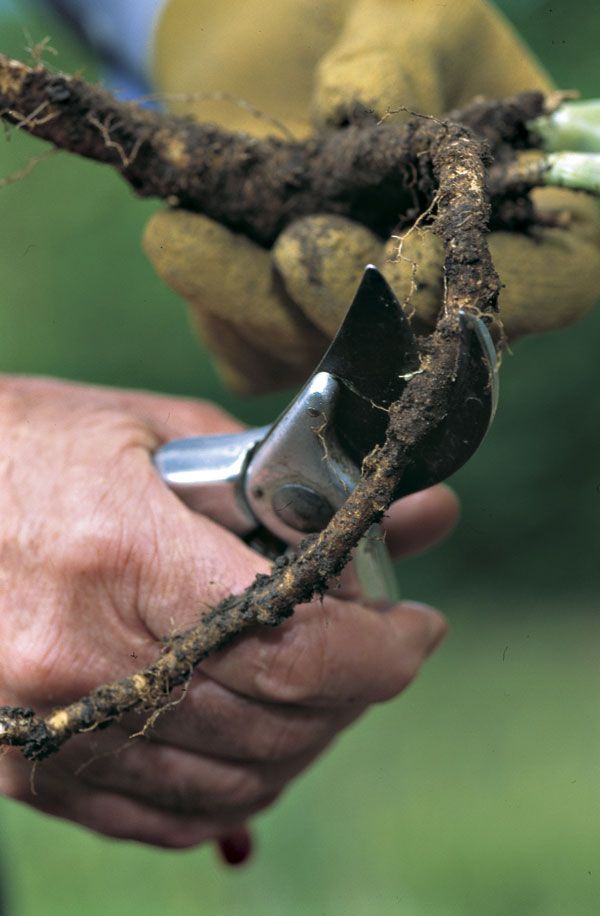



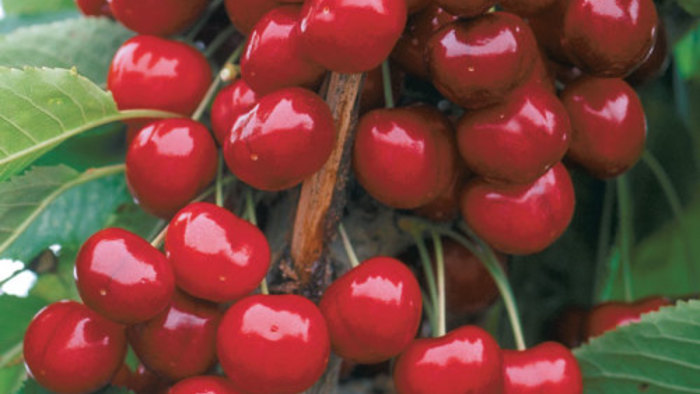












Comments
Log in or create an account to post a comment.
Sign up Log in